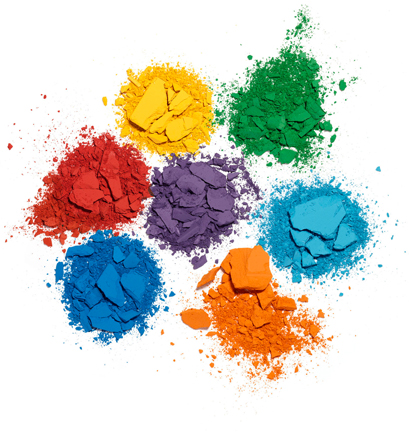Cosmetic Colors: What’s in Your Makeup? - Sun Food tech Pvt Ltd
Have you ever stopped to wonder what gives your lipstick its deep red hue or your eyeshadow its shimmering gold? Behind the beauty is a fascinating world of cosmetic colors—a combination of art, science, and regulation. Let’s explore what cosmetic colors are, how they’re made, and what you should know about them.
Cosmetic colors are pigments or dyes used to tint, shade, or highlight cosmetic products such as:
-
Lipsticks and lip glosses
-
Eye shadows and eyeliners
-
Nail polishes
-
Foundations and blushes
-
Hair dyes
-
Skincare with color tint (e.g., BB creams, color-correctors)
These colors are often classified as either natural (plant- or mineral-derived) or synthetic (lab-made). Both types can be used safely—if properly regulated.
🌱 Natural vs. Synthetic Colourants:
| Type | Examples | Pros | Cons |
|---|---|---|---|
| Natural | Mica, beetroot, iron oxides | Perceived as safer, eco-friendly | Limited shade range, less stable |
| Synthetic (e.g., FD&C dyes) | Red 7 Lake, Blue 1, Yellow 5 | Vibrant, consistent, cost-effective | May cause irritation in sensitive skin |
“Lake” colors, common in makeup, are a form of insoluble dye bonded to a substrate like aluminium. They're widely used for bold, long-lasting shades.
🧪 How Cosmetic Colors Are Regulated
Colourants are one of the most tightly regulated ingredients in cosmetics. In the U.S., the FDA maintains a list of approved colour
additives, while the EU has even stricter controls under the EU Cosmetics Regulation.
Key facts:
-
Not all food-safe dyes are approved for cosmetics (e.g., some colors are banned near the eyes).
-
Many countries require color additives to be batch-certified.
-
“CI” numbers (Color Index numbers) are often listed on packaging (e.g., CI 77491 = red iron oxide).
🧴 Clean Beauty & Color Concerns
With the rise of the clean beauty movement, there’s growing consumer awareness around color additives. Some concerns include:
-
Heavy metals in mineral-based pigments
-
Synthetic dyes and skin sensitivity
-
Nanoparticles in shimmering mica
Brands are responding by offering vegan, cruelty-free, and naturally colored formulations. Still, “natural” doesn't always mean safer—it’s about purity, processing, and testing.
✨ The Future of Cosmetic Colors
New innovations are shaping the future of color in beauty:
-
Biotech pigments (e.g., lab-grown carmine alternatives)
-
Color-shifting formulas (temperature- or pH-sensitive)
-
Sustainable mica sourcing
-
AI-driven shade matching for inclusivity
These advancements promise more sustainable, diverse, and safe cosmetic options for everyone.





Comments